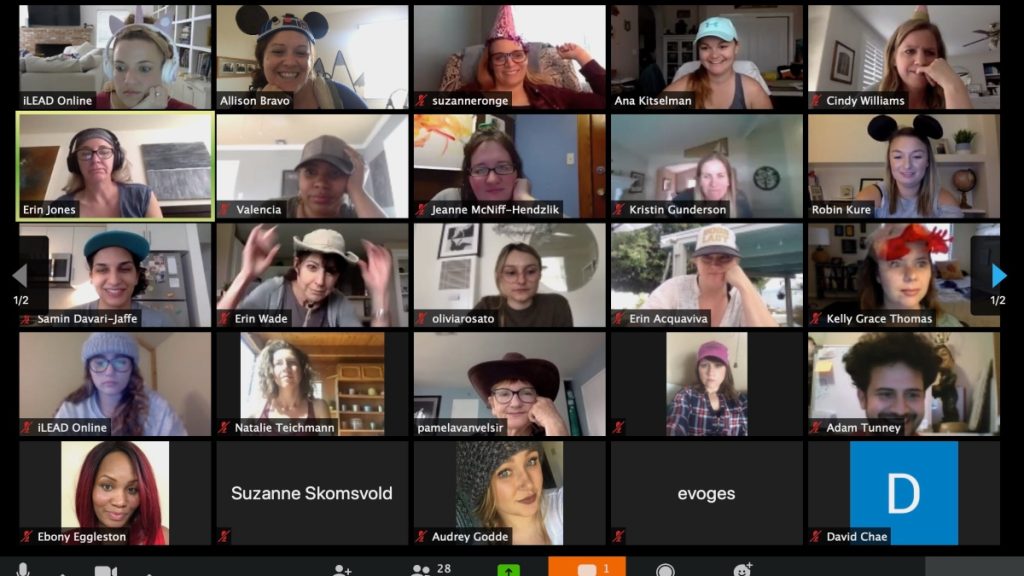At one time in education, classroom walkthroughs were primarily done by school leaders and administrators. Then, some started adding in teachers in order to have them benefit from observing their colleagues. But very few have worked to implement this in the online learning environment. Well, the team at iLEAD Online have not only implemented walkthroughs, but have embraced them as an integral part of their professional learning journey.
For the past couple of years, iLEAD Online Program Coordinator Kim Wolf, along with her entire team, have used this Peer Course Walkthrough Template to visit online classes in their entirety in order to learn best practices from one another and how to collaboratively embrace continuous improvement.
“Facilitators provide amazing feedback to one another,” said Wolf. “They focus on how they can each grow their own classes and practice.”
Wolf said that facilitators operate in subject area or grade level teams and examine the structure of the course, project design and more always looking for both celebrations and growth takeaways.
“They really direct themselves and get what they individually need throughout the walkthrough process,” said Wolf.
Because the classes are online, Wolf said that facilitators can see the entire course. She said this allows for a more in-depth examination of the learning picture versus the snapshot one might get visiting a class period in traditional walkthroughs.
Although there are too many illustrations to include here, Wolf highlighted examples such as whether a project had enough voice and choice or how the learning outcomes are linked to the standards. She said that spring is a great time to gather this type of feedback as facilitators have observed how learners respond to different things.
“We do different walkthrough processes all year long, but this one in the spring really lets facilitators reflect on the learning and the learners,” said Wolf. “Now we are gathering feedback in order to polish and evolve for the next school year.”
Wolf sees this process as invaluable. While some professional learning may feel passive, she said this process is indeed very active where real professional learning and growth take place in real time.
“I love that everyone on our team can feel like they have a direct hand in growing their knowledge as educators,” said Wolf. “This is a beautiful way to invite all facilitators into the learning process.”
There is also modeling at play here, said Wolf. She said if our collective expectation is for learners to be able to design projects, get feedback and have a customized learning experience, then our facilitators need to operate the same way.
“There are many ways to get outcomes and we need to trust one another to get there,” she said. “We want them to talk about what’s working and what isn’t so we can share as a team.”
Facilitators concur with Wolf’s assessment of the value of this walkthrough process for their personal and the team’s collective growth.
Facilitator Natalie Teichmann said she thoroughly enjoys the professional conversations with her colleagues about their courses.
“It is always helpful to have a thought partner and share ideas,” she said. “Teaching and learning are never one size fits all and it’s very rewarding to see how the same standard can be met in different ways.”
Science Team Leader and AP Coordinator Samin Davari is a true believer in the process and has seen tremendous growth for all who participate.
“I have picked up some of my best teaching skills while watching my team,” said Davari. “It’s also an opportunity to slow down and think about the curriculum and get advice if you need it.”
Facilitator David Chae believes that this helps all facilitators not only think about the learner on the other side of their screens.
“The most powerful thing is valuing the other person’s perspective and finding different methods so that all types of learners can understand the material,” said Chae. “This helps us chew on what has been created, so that we can continually make the necessary adjustments so that learners can value what they are learning.”
From a leadership point of view, this type of a deep, meaningful walkthrough process is a game changer.
“The process is valuable to all of our team,” said Erin Jones, Director of Online Programs for iLEAD School. “It builds collaboration and encourages a culture of peer review that promotes excellence.”
For Wolf, this entire effort is all about how to best support one another for the greater good of facilitators and the learners they serve. She said that supporting one another the best way possible is the goal.
“If I see patterns in terms of what support people need, maybe we need more guidance, certain resources or certain professional development,” said Wolf. “It’s a real give and take. We as leaders learn to listen and understand in order to best serve them.”

